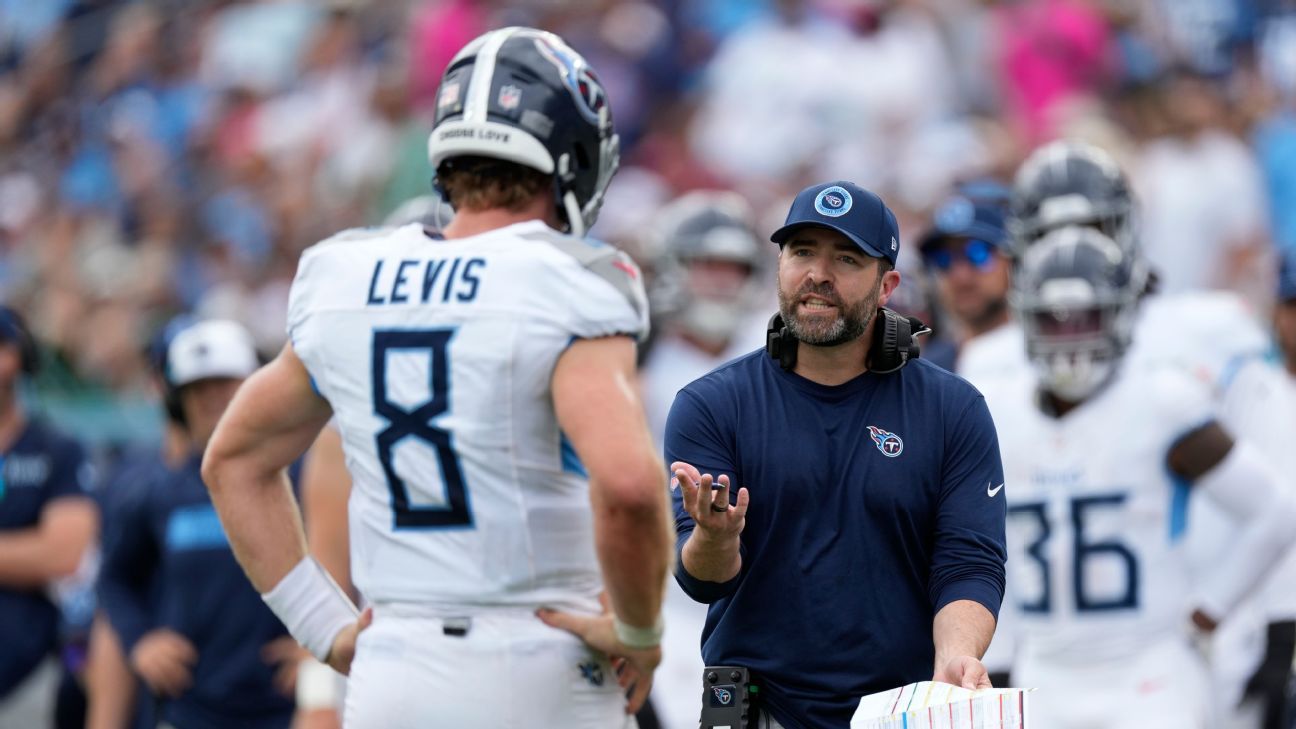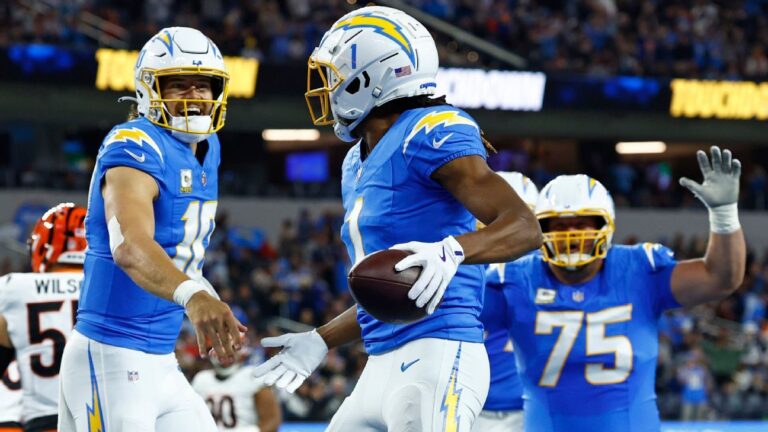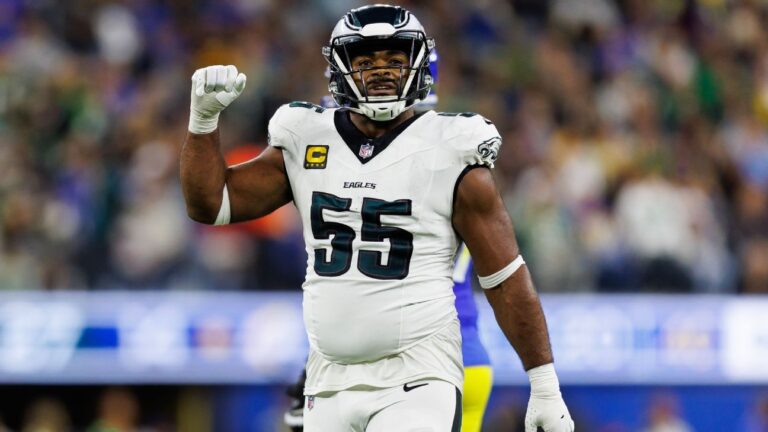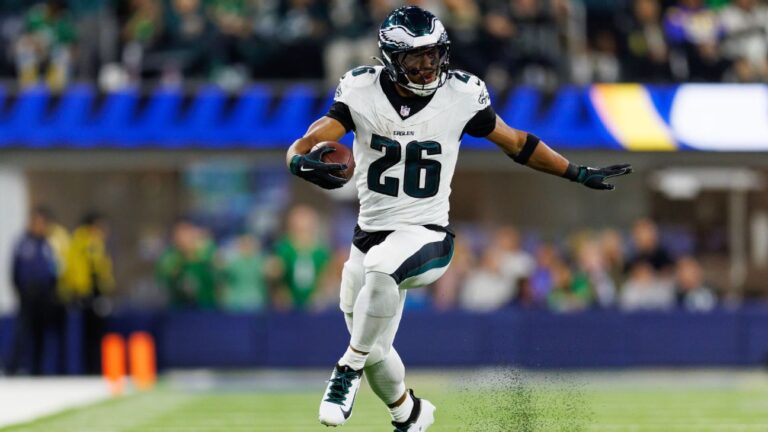-
Turron Davenport, ESPNOct 7, 2024, 06:00 AM ET
- Turron Davenport covers the Tennessee Titans for ESPN. Turron is a former collegiate football player at Cheyney University and is a native of Philadelphia, and he has authored/co-authored four books. You can catch Turron on ESPN Radio on his show “Talking with TD” and you can follow him on Twitter: @TDavenport_NFL.
NASHVILLE, Tenn. — When Brian Callahan took the job to be the next coach of the Tennessee Titans this past offseason, he knew he was hired to help maximize the potential for quarterback Will Levis.
Levis had just completed a rookie season where he showed signs of promise but the team required a little more dating before committing to a long-term relationship. Callahan embraced the challenge of developing Levis and hitched his potential success to the second-year quarterback.
But things haven’t quite gotten off to the start the first-year coach had hoped for.
Best of NFL Nation
• Does K.C. have enough firepower?
• What’s behind Chris Olave’s surge?
• 3 things to help Levis develop
• Packers’ Kraft puts DBs on notice
• Key to Darnold’s resurrection
After spending $228 million to upgrade the roster this offseason, the Titans sit at 1-3. Heading into their Week 5 bye, Levis led the NFL in turnovers (nine) and his six interceptions were tied with Indianapolis Colts quarterback Anthony Richardson for a league high. To make matters worse, two of those interceptions were returned for touchdowns — also a league high.
Despite Levis’ struggles and right shoulder injury, Callahan vowed to move forward with him.
“Will is our starting quarterback, and when he’s healthy, he’s starting,” Callahan said. “There’s no controversy. There’s no second-guessing. That’s what’s happening.”
Still, Tennessee’s one win came with backup Mason Rudolph leading the way after Levis was injured in the first quarter against the Miami Dolphins. Levis stood on the sideline with his helmet on, indicating he wanted to play. But Callahan and the team training staff erred on the side of caution and kept him out.
The 31-12 win was fueled by the run game (a season-high 142 yards) as Tennessee scored 30 or more points for the first time in 1,002 days.
Costly mistakes by Levis and the special teams units — along with a minus-1.8 average turnover margin — have contributed to the losses. Callahan has been very vocal about Levis’ decision-making. He has worked to be “transparent and straightforward and truthful” with Levis throughout the process.
“Everything I’ve done with him from the minute I’ve gotten here has been about trying to do everything we can to build him up — to give him confidence and surround him with players and give him every opportunity to succeed,” Callahan said. “That’s not going to stop.”
“I’m still confident,” Levis said after throwing his second pick-six of the season. “It’s just something needs to click.”
Titans coach Brian Callahan speaks with quarterback Will Levis in Nashville. Levis went into Tennessee’s Week 5 bye leading the NFL in turnovers at nine. George Walker IV/AP
As the Titans prepare to return from the bye and start divisional play Sunday (1 p.m. ET, CBS) against the Colts, here are the three major areas where Levis needs to grow:
1. Pre- and post-snap recognition
Like most coaches working with younger quarterbacks, the Titans try to give Levis ideas of where he should throw the ball based on looks the defense will give him before the ball is snapped. But things could change drastically once the ball is in play.
“You’re always going to have a tell pre-snap,” offensive coordinator Nick Holz said. “But it’s all still post-snap recognition. We don’t want to totally eliminate anybody pre-snap.”
Two interceptions could have been avoided if Levis recognized what was happening after the snap and how that impacted his predetermined destinations with the football.
Green Bay Packers cornerback Jaire Alexander picked Levis off and returned it for 35 yards for a touchdown in Week 3. The Packers were in Cover 3 with Alexander being responsible for a deep third of the field.
PICK 6!
Jaire Alexander high steps his way into the end zone for the @Packers TD!
: #GBvsTEN – Sunday on FOX
: https://t.co/waVpO8ZBqG pic.twitter.com/YcSr1WQaQI— NFL (@NFL) September 22, 2024
Alexander lined up 8 yards from DeAndre Hopkins so Levis thought the quick 5-yard route was where he needed to throw the ball. Levis didn’t see how Alexander completely disregarded Hopkins’ route and kept his eyes solely on the quarterback after the ball was snapped.
There was no deep threat to Alexander’s side of the field, so he was able to key on how quickly Levis threw the pass to Hopkins. The veteran cornerback broke on the ball and easily snatched it out of the air before high-stepping to the end zone for the touchdown.
“Maybe I could have done a better job of just seeing him stay put,” Levis said after the game. “But quick game, we’re trying to take the easiest hitch there. I thought I had it and obviously didn’t.”
Levis’ most recent interception didn’t factor into the game’s outcome. But it also could have been avoided.
Dolphins defensive coordinator Anthony Weaver baited Levis into an interception by showing him a blitz on one side and having outside linebacker Emmanuel Ogbah drop into the passing lane, which would most likely be where the ball would go.
“They brought a simulated pressure from the front side and that backside they dropped,” Callahan explained.
Levis saw the cornerback go with the tight end running the flat route, leaving the curl open for Hopkins. But he missed Ogbah dropping into coverage and gave the ball to the Dolphins.
“He just didn’t see him,” Callahan said. “Those things happen sometimes. Those guys are hard to pick up occasionally. Obviously would like to not throw an interception, but it happened.”
2. Trying to do too much
While at Kentucky, Levis developed the reputation of trying to be a hero too often. He got caught trying to make plays that weren’t there.
This season has seen that same version of Levis. The coaching staff has been trying to get him to not do too much and live to see another play. Levis needs to learn to keep his body out of harm’s way instead of taking on defenders when contact is imminent.
Levis had two mistakes that significantly contributed to losing their first two games, both 24-17 results.
Follow the NFL all season long
• Full schedule » | Standings »
• Depth charts for every team »
• Transactions » | Injuries »
• Football Power Index »
• Playoff picture projections »
More NFL coverage »
The season-opening loss to the Chicago Bears finished with Levis throwing a wobbly pass toward the sideline as he was getting sacked. Bears cornerback Tyrique Stevenson intercepted the pass and ran it to the end zone for the go-ahead touchdown.
Callahan had just told Levis to be careful. He was left dumbfounded watching Levis hand the game away.
Then there was the next week, where the Titans fell to the New York Jets. The Titans had a 7-0 lead in the first quarter and got the ball back after the defense forced a three-and-out. Tennessee started on its 10-yard line and drove the ball to the Jets’ 6-yard line.
Levis tried to avoid a sack by lateraling the ball to Tyjae Spears, but the play resulted in a turnover instead. Callahan was seen on the TV broadcast yelling, “What the f— are you doing?” to Levis after the play. Callahan’s reaction paired perfectly with the boos coming from the fans at Nissan Stadium.
“He’s been trying to make a play when there isn’t one to be made and then forced himself into some errors,” Callahan said. “But, outside of those plays, he’s done a lot of really good things, and I’m excited about his growth.”
3. It’s going to take time
Levis has played in a different offense every year since his junior year at Kentucky. That’s four different schemes in four years. Callahan has a documented history of working with quarterbacks. The list of players Callahan has worked with includes Hall of Famer Peyton Manning, Super Bowl winner Matthew Stafford and Joe Burrow with the Cincinnati Bengals, where Callahan served as the offensive coordinator before taking over in Tennessee.
Callahan is now tasked with getting Levis comfortable in his scheme and offering stability that hasn’t been present in the past. Right now, Levis isn’t where he needs to be. He’s still in the early stages of his development as an NFL quarterback.
Top stories of the week from
Get exclusive access to thousands of premium articles a year from top writers.
• Predicting 11 NBA breakout players »
• CFB: Every conference sleeper, long shot »
• UFC 307: Grades for Pereira-Rountree »
More ESPN+ content »
Hopkins believes experience is what he’s missing.
“Will is our quarterback right now, and I wouldn’t want anyone else on the field, the way he prepares,” Hopkins said. “He’s going to learn from his mistakes. He hasn’t played a full season. It’s going to come with time.”
Some of Callahan’s route concepts call for quick, high-percentage throws to the pass catchers. There are times when Levis will see a receiver coming open but doesn’t throw the ball.
A good example was when Levis hurt his shoulder against the Dolphins. It was third-and-4 in the first quarter. Levis had a chance to get the ball to tight end Chig Okonkwo, who had settled into an open spot between two defenders and was ready to catch the ball. Levis saw Okonkwo but also saw the pass rush bearing down on him.
A quick throw would have gotten the ball to Okonkwo and gained the first down. Instead, Levis scrambled and tried to dive for the first down as Dolphins defender Calais Campbell chased him — resulting in the injury that caused him to miss the rest of the game.
Callahan understands it’s hard to play quarterback in the NFL. He acknowledges how it requires a developmental process and is looking forward to seeing how Levis bounces back when he returns to the offense.
“We’re going to find out everything about Will that we can,” Callahan said. “He’s going to continue to grow, get better and play better. He needs to play better for us. And at the end of the day, I believe that he will.”







